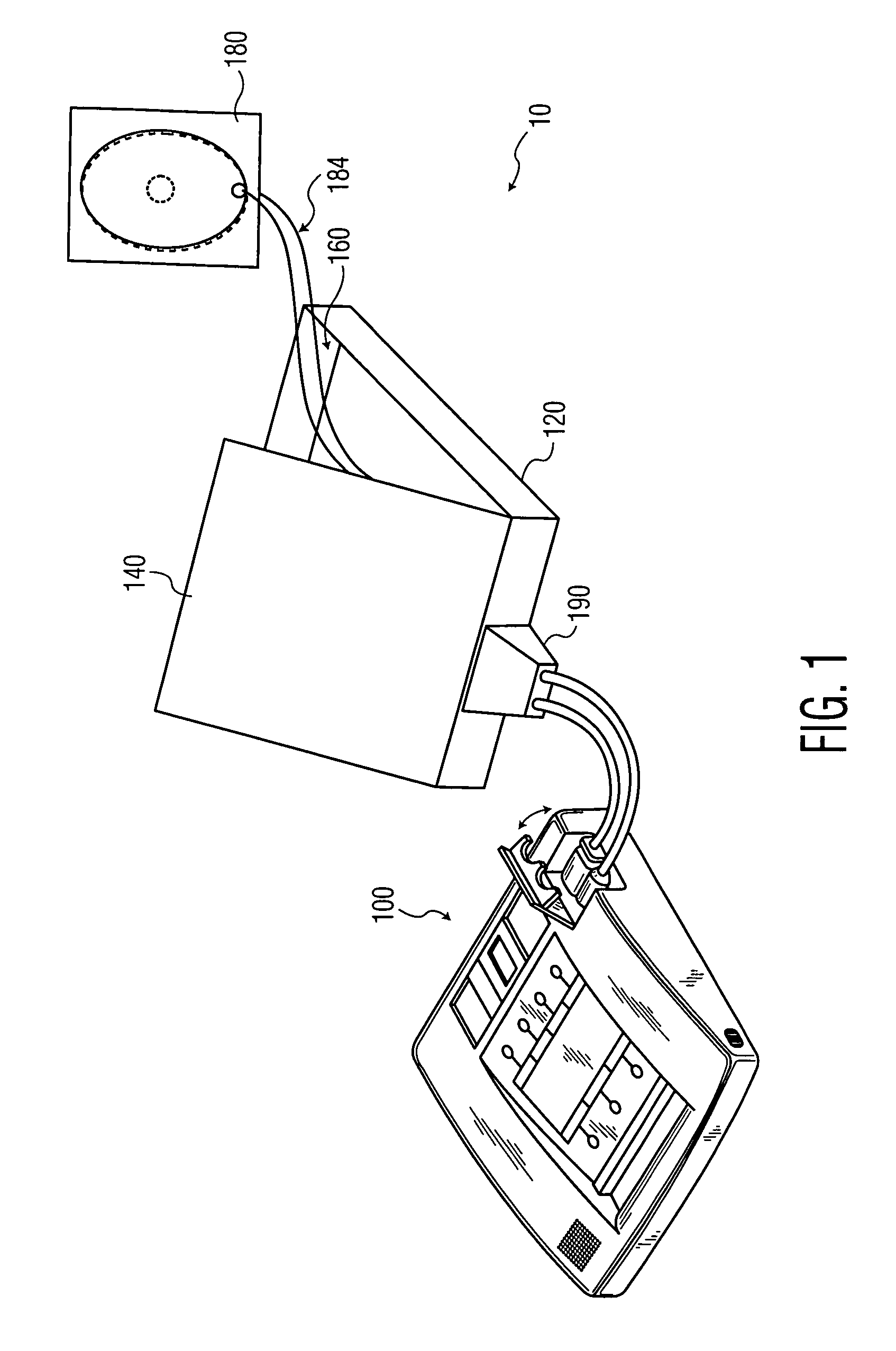Method of detecting when electrode pads have been handled or removed from their package
a technology of electrode pads and packaging, applied in the field of electrodes, can solve the problems of wasting precious time and taking much longer
- Summary
- Abstract
- Description
- Claims
- Application Information
AI Technical Summary
Benefits of technology
Problems solved by technology
Method used
Image
Examples
first embodiment
[0050]FIG. 4 is a cross-sectional view depicting a first embodiment for enhancing impedance variability for a packaged pair of electrodes 404 in accordance with the present invention. The packaged pair 404 includes two electrode pads 180 and an intervening electrically nonconductive element 408, preferably an electrically non-conducting, non-stick release layer such as silicon-coated paper, polyester, polypropylene, polyethylene, and / or other non-stick materials. Release layer 408 mates the two electrode pads 180 and has an opening 410. The package 412 of the packaged pair 404 surrounds the pads 180 and the release layer 408. The package 412 can be made of flexible plastic or other flexible material or may be, rigid and implemented as the electrode compartment 160 of the AED 100 for example. The electrode pad 180 has an electrode 416 which is shown to be a circular or oval shaped ring having a void or an opening 420 aligned adjacent to a release layer opening 424. Between the electr...
second embodiment
[0056]FIG. 5 is a cross-sectional view of a second embodiment for enhancing the impedance variability for the packaged pair of electrodes 404 in accordance with the present invention. The outer surface 440 of the foam layer 428 is joined to a portion 442 of the inside surface 444 of the package 412. The joinder can be accomplished by insertion of a piece of 2-sided tape 446. Alternatively, the adhesive swatch 446 may be hydrogel or a multi-layered film of pressure-sensitive adhesive or other substrates designed to adjust the adhesive and release properties of each side of the film. If the package 412 is rigid, e.g. the electrode compartment 160, the tape 446 is placed to adhere the bottom electrode pad 180 to the compartment.
[0057]As in the first embodiment, the hole(s) 410 in the release layer 408 allows the hydrogel from the first pad 180 to touch the hydrogel of the second pad 180, creating an electrical connection between the pads. Once this electrical connection is established,...
third embodiment
[0059]FIG. 6 depicts a third embodiment for enhancing impedance variability for the package pair of electrodes 404 in accordance with the present invention. A packaged electrode pad pair 404 and its accompanying lead wires 184 are held within the compartment 160 by two belts or straps 604 that mutually and adhesively attach end-to-end to surround the pair and which attach at their other ends to the compartment, which in turn surrounds the belts and the pads. The end-to-end attachment 608 is configured with an adhesive strength having a magnitude small enough to allow an operator to manually separate the belts to apply the pads 180 to a medical patient in need of defibrillation. As the user pulls the pads 180 out of their package, the straps 604, which can be made of paper, plastic, or even a thin metal foil, hold the pads and causes them to bend. The belts 604 are preferably placed around the middle of the pad pair 404, so that the bending occurs over the hole(s) 410 in the release ...
PUM
 Login to View More
Login to View More Abstract
Description
Claims
Application Information
 Login to View More
Login to View More - R&D
- Intellectual Property
- Life Sciences
- Materials
- Tech Scout
- Unparalleled Data Quality
- Higher Quality Content
- 60% Fewer Hallucinations
Browse by: Latest US Patents, China's latest patents, Technical Efficacy Thesaurus, Application Domain, Technology Topic, Popular Technical Reports.
© 2025 PatSnap. All rights reserved.Legal|Privacy policy|Modern Slavery Act Transparency Statement|Sitemap|About US| Contact US: help@patsnap.com



